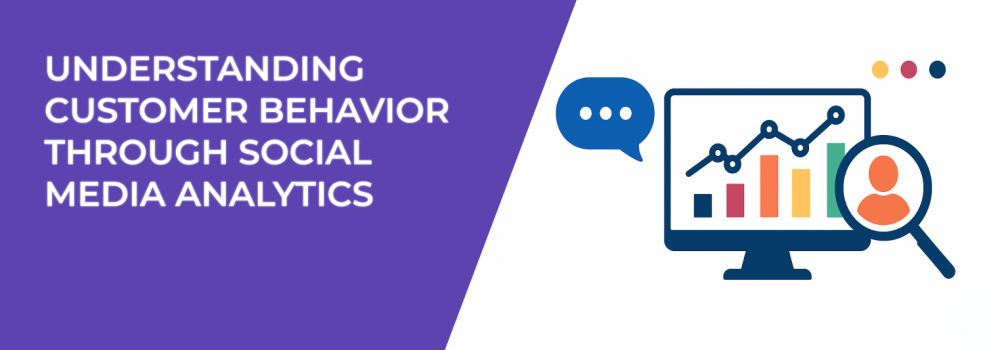Ever feel like your ads are doing okay but still missing something? You're not alone. The gap between a campaign that performs and one that converts like crazy often comes down to one thing: understanding customer behavior.
And where can you see that behavior unfold in real-time? Social media.
Social media analytics can show you not just what people say they want, but how they actually behave when they're exposed to your brand. This is the insight that separates good marketers from those who drive exceptional results.
Why Social Media Analytics Matter
Social platforms are more than just content delivery channels. They double as behavior tracking engines. Every like, comment, share, or scroll offers a clue about what resonates with your audience.
The data you gather here feeds into better targeting, stronger creatives, and smarter spending. As we explain in our Facebook Ad Targeting 101, your campaigns are only as strong as your insights.
The Metrics That Reveal Real Customer Behavior
Rather than drowning in dashboards, zoom in on metrics that actually explain why people behave the way they do.
1. Engagement Rate
This metric shows how your audience is interacting with your content — not just how many people saw it.

High engagement means people are:
-
Reacting emotionally (likes, loves, angry reacts, etc.);
-
Commenting or replying;
-
Tagging others;
-
Sharing your post.
If your engagement is low, ask: is your creative aligned with audience expectations? Are you targeting the right personas?
2. Click-Through Rate (CTR)
CTR measures the percentage of users who clicked on your link after seeing your ad or post. A high CTR typically means:
-
Your visual or headline caught attention;
-
The message was clear and compelling;
-
The offer matched their intent.
Low CTR? That often signals a mismatch between creative and audience. Or, it might mean the offer needs work.
3. Sentiment Analysis
This tells you the emotional tone of responses.

Are the comments:
-
Mostly positive?
-
Neutral or confused?
-
Negative or sarcastic?
Tools like social listening dashboards can analyze emoji use, wording, and comment history to reveal how people feel about your brand.
4. Time of Engagement
Timing matters more than people think. Post when your audience is most active, and you maximize reach and reactions. If you post during low-activity windows, even great content can flop.
To improve, experiment with different days and time slots — and review patterns regularly. You’ll find more tips in our guide on social media strategies for engagement.
How to Interpret What the Numbers Actually Mean
Data by itself is noise. You need to ask the right questions:
-
Are people taking action, or just watching?
-
Are we getting the right kind of engagement (buyers vs. browsers)?
-
Which stage of the funnel is leaking attention or trust?
If your ad performance suddenly drops, the reason might not be technical. It could be behavioral. We explore this further in Why You See 'Ad Set May Get Zero' on Facebook.
Turn Behavior Insights Into Smarter Targeting
Once you understand how your audience acts, you can start building campaigns that respond to those behaviors.
Ways to Apply Social Data to Targeting:
Segment audiences based on interaction level.
Instead of just targeting everyone who saw your ad, break it down:
-
Users who watched more than 50% of a video;
-
People who clicked a link but didn’t convert;
-
Engaged followers who’ve commented more than once.
Customize creative based on audience intent.
Top-of-funnel audiences are just getting familiar with your brand — they’ll respond better to educational or entertaining content. Mid-funnel users need proof and trust, so show them testimonials, demos, or social proof.
Use high-performing organic content as a paid template.
Found a post that organically drove high engagement or saves? That’s a prime candidate for paid amplification.
Track and adapt based on sentiment.
See what phrases, colors, or formats drive the most positive reactions — and use that as creative direction for your next ads.
If you need help defining those segments more precisely, check out our full step-by-step guide on defining a target audience.
Final Thoughts: Stop Guessing, Start Observing
Customer behavior isn't mysterious. It's visible — if you're paying attention.
Social media analytics let you decode the signals your audience is already sending. Use them. Test them. Let the numbers show you where to optimize, not just where you've been.
It’s not about collecting more data. It’s about making better decisions based on the right data.

